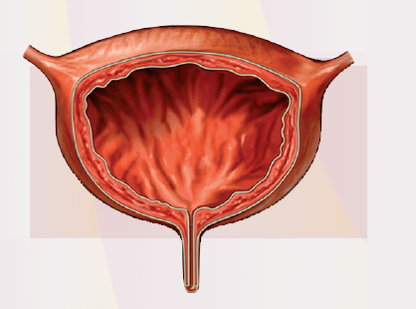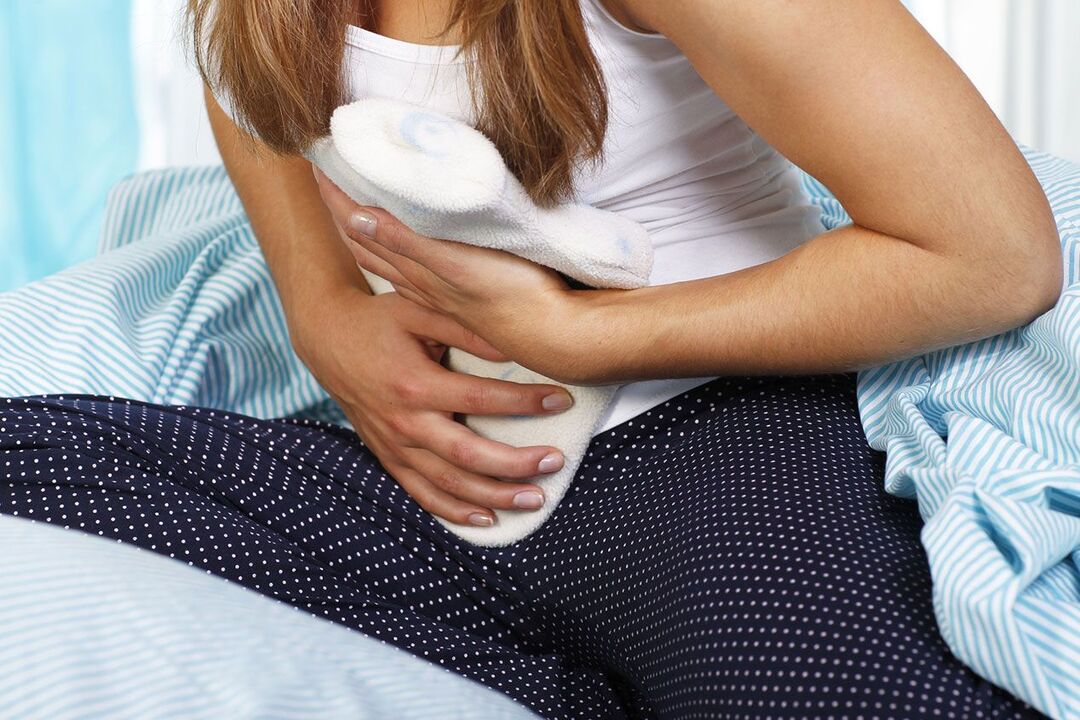Cystitis is inflammation of the bladder walls. It is characterized by a rapid urination (every 15-20 minutes), painfully painful in small portions, sometimes with a blend of blood, subfill body temperature. The transition from disease to a chronic form, the rise of infection and the development of the inflammatory process in the kidneys and decrease - in the urethra are possible. In the diagnosis of cystitis, urine analysis and bladder ultrasound results help the urologist. To determine the etiology of cystitis, bacterial sowing of urine and urethra stains is performed. Cystitis therapy mainly implies an effective effect of the drug in infectious agents that caused it.
general information
Cystitis is inflammation of the bladder mucous membrane. In most cases, cystitis is infectious in nature. The disease is widespread, affects representatives of weak and stronger sex, but is more common in women due to some anatomical characteristics of the female body structure.
The wider and shorter than male female urethra, so it is easier for pathogens to penetrate the bladder. This determines the most frequent of cystitis in women. Most of the time, women of childbearing age are sick with cystitis. There are frequent cases where cystitis develops in a woman repeatedly, significantly worsening the quality of her life.
As a rule, cystitis is caused by representatives of conditionally pathogenic flora-an intestinal rod, streptococci, staphylococci, etc. Cystitis sometimes occurs due to pathogens infection of sexually transmitted-Mycoplasm and urea diseases.

Cystitis symptoms
The most characteristic symptom of cystitis is painful urination, accompanied by residual sensations of burning and rubbing. In addition, patients with cystitis are disturbed by lower abdomen pain and an incomplete emptying sensation of the bladder. Sometimes, with cystitis, urinary incontinence develops, which appears with a strong desire to urinate.
Urine with cystitis may be muddy or acquire a reddish hue due to red blood cell impurities. The temperature sometimes rises to 37, 5 degrees. Increased temperature with cystitis can signal possible kidney disease; Therefore, in these cases, it is urgent to request qualified medical care.
The prevalence of cystitis
Acute cystitis is one of the most common urological diseases. Most of the time, uncomplicated cystitis is found, in which microbes affect only the mucous membrane without affecting the submucosal layer. According to studies in the field of Urology, acute cystitis each year falls from 26 to 36 million people. At the same time, incidence rates among women are 500 to 700 episodes by 1000, while among men aged 21 to 50, a similar indicator is only 6-8 cases by 1000.
Girls suffer from cystitis three times more often than boys. The disease is extremely rare in newborns and children under 1 year or more common among children from 1 to 3 and 13 to 15 years old. Most of the time, cystitis occurs in children from 4 to 12 years.
Chronic cystitis also belongs to the number of generalized urological diseases. According to the survey, chronic cystitis suffers from 11 to 21% of the population. A significant data dispersion is due to a different approach to determine chronic cystitis. Some studies of study believe that the diagnosis of chronic cystitis should be done if the frequency of exacerbations is 2 times a year or more, other exacerbations do not specify.
Cystitis in summer
It is unlikely that there is a woman who wants the pleasure of hot summer days to be overshadowed by such an unpleasant disease as cystitis. Meanwhile, in summer, especially if a woman leaves away from home and falls into an unusual environment, there are many reasons for cystitis.
The most common causes of hot season cystitis:
- accommodation in a new place during the holidays, causing problems subject to hygiene rules;
- Hypothermia of the body, which occurs due to prolonged bath in cold water;
- In violation of the usual urination regime associated with a flight, moving or in a new place (under such conditions, a woman usually needs to endure for a long time, waiting for a convenient occasion);
- A marked change in climate, which negatively affects immunity.
An additional risk factor for the development of cystitis is sometimes an increase in sexual activity compared to the antecedents of unfavorable conditions for the female body.
If your vacations overshadowed the occurrence of such an unpleasant disease as cystitis, you should contact a urologist. To clarify the diagnosis, it will be necessary to undergo a bladder ultrasound and make a urine analysis. Modern antibacterial medications effectively affect cystitis, can accelerate recovery and prevent the transition from acute to chronic cystitis.
Unlike the drugs of previous generations that affect the entire body, modern antibiotics used to treat cystitis selectively act on inflamed bladder tissues, virtually without affecting other organs and systems. The concentration of drugs reaches the maximum values only in the urine and the inflamed mucosa membrane of the bladder. This can minimize toxicological load in the body in the treatment of cystitis and increase the effectiveness of medicines.
Phototoxicity is an unpleasant side effect caused by many medications to treat cystitis. It is manifested in increased sensitivity to sunlight, the appearance of redness and burning even when exposed to small ultraviolet rays. It develops due to the presence of substances in medicines with the properties of photosensitizers and photoreactives. Such substances lead to the appearance of a large number of free radicals on the skin, which in turn causes the destruction of skin cells, inflammation and burns.
Cystitis during pregnancy
Cystitis can develop in any pregnancy. The likelihood of cystitis development increases due to the displacement of internal organs, pressured by a growing uterus, changes in the hormonal and hemodynamic background. The impact of these factors causes incomplete emptying of the bladder, and the remains of urine on the bladder serve as a favorable environment for the development of bacteria.
In the first signs of cystitis, a pregnant woman should undergo extraordinary consultation from a gynecologist who leads to pregnancy and tell him about the symptoms that appeared. If necessary, the doctor will give the patient a direction to the urologist.
Children's cystitis
Cystitis can develop in a child of any age, however, for old and school girls, the risk of disease increases 5 to 6 times. The main causes of frequent cystitis development in children in this group are several factors. Girls' ovaries have not yet begun to produce estrogens, the properties of the mucous membrane barrier are low and the wide and short urethra allows pathogenic microorganisms to enter the bladder cavity.
The probability of cystitis development increases in case of other diseases due to a decrease in immunity and the formation of favorable conditions for the reproduction of pathogenic microbes in the urethra. The main way to prevent cystitis in girls is to carefully comply with hygiene rules.

The causes of cystitis
In 70-95% of patients suffering from acute cystitis, the cause of the disease becomes an Ereather ball wand, in 5-20% of patients, Staphylococcus is found and, in the rest, proe or klebsell act as pathogen. Normally, cystitis is caused by representatives of conditionally pathogenic flora. With the development of cystitis due to instrumental or surgical interventions, gram -negative bacteria usually become the cause of the disease. Studies confirm that cystitis pathogens may not only be bacteria, but also viruses, mycoplasmas, trichomonas, chlamydia and various fungi.
The wide prevalence of cystitis in women is due to the low length and the wide space of the urethra and its location in relation to other organs. The female urethra, unlike man, is close to the anus. The anatomical characteristics and topography of the female body contribute to the penetration of pathogens in the urethra, their migration to the bladder and the development of cystitis.
In men, cystitis rarely develops. The reason for cystitis in men usually becomes inflammation of the urethra, prostate gland, testicles and seed bubbles appendages. Sometimes urethra infection occurs due to bladder catheterization in women and men.
The risk of cystitis increases during bladder catheterization in men who suffer from prostate adenoma, one of the symptoms of which is a constant delay in the urine. The danger of cystitis development also increases with the introduction of a pregnant woman's catheter or recently gave birth to a woman due to a decrease in the tone of the urinary tract.
Cystitis Treatment
The rapid healing of cystitis and the complete restoration of the bladder mucosa membrane are possible with the timely start of treatment and the use of sufficient effectiveness. It should be emphasized that the chances of completely free from cystitis increases with timely diagnosis and the use of medicines that detected in the pathogens of the infection. Subsequently, the onset of treatment and prescription drugs that only eliminate symptoms of cystitis, without affecting the pathogenic environment, can lead to the transition from acute to chronic cystitis.
The main task faced by the doctor who treats cystitis is the destruction of pathogenic microorganisms that penetrated the bladder and caused inflammation of the mucosa. The choice of drugs for antibacterial therapy is determined by parameters such as the duration of the disease and the severity of symptoms. In addition, when selecting medications, possible side effects, absorption of the medicine, method and excretion rate, presence of concomitant diseases, etc. are taken into consideration.
The effectiveness of the drug in the treatment of cystitis is determined by the ability of this medicine to affect certain microorganisms. It should be remembered that pathogenic bacteria adapt and become insensitive to antibiotics. Over time, the main causative agent of cystitis (E. coli) became resistant to these drugs. In addition, drugs for the treatment of cystitis, related to the previous generation of antibiotics, had a very high level of toxicity and caused various side effects.
When choosing a drug for cystitis treatment, the cost of treatment should also be taken into consideration, which is determined not only by the cost of a tablet, but also by the actual effectiveness of the antibiotic, the duration of ingestion and possible risk to patient health. Today there are medications available for the treatment of cystitis, selectively affecting the pathogens of the disease. Once in the body, the drug is concentrated in the bladder, which allows it to increase its effectiveness. In addition, the use of latest generation antibiotics ensures a reduction in cystitis treatment, reduces the likelihood of side effects and reduces the risk to the patient's body.
In the treatment of cystitis, fatty and spicy foods should be excluded from the diet, increase fluid intake and avoid hypothermia. A hot heating pillow placed in the lower abdomen helps in cystitis. Complex treatment of cystitis in the use of ionoporesia, UHF or inductumemia is possible. We must not forget that in the presence of certain gynecological diseases, physicalization and thermal procedures are against -indicated.
Useful tips on cystitis prevention:
- Try to avoid hypothermia.
- Despite the circumstances, follow the rules of personal hygiene.
- For hygienic procedures, use neutral savers.
- During menstruation, change the hygienic joints in a timely manner.
- Empty the bladder in time.
- Increase fluid intake.
- Excessively tight clothes can make blood circulation worse in the pelvic area, so it is better to refuse these clothes.
- Try to normalize the work of the intestine. With a tendency to constipation, the portion of fresh fruits and vegetables in the diet should be increased.
























